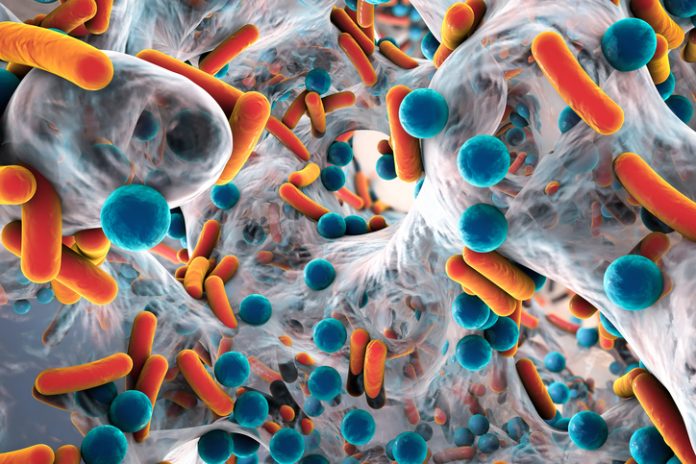
North-American researchers have used machine learning to discover a new compound that controls bacterial infection, highlighting the value of artificial intelligence in antibiotic discovery.
Screening around 7500 molecules revealed that the antibacterial compound abaucin, which was originally touted as an anti-diabetes drug, could inhibit the growth of Acinetobacter baumannii in vitro.
The bacterium is often found in hospitals and can display multidrug resistance. It may lead to pneumonia and meningitis, among other serious conditions, and was a leading cause of infection among soldiers wounded in Iraq and Afghanistan.
Further investigation revealed that abaucin affected lipoprotein trafficking through a mechanism involving LolE, a protein that contributes to the shuttling of lipoproteins from the inner to the outer membrane.
Abaucin was also able to control an A. baumannii infection in a mouse wound model, report Jonathan Stokes, PhD, an assistant professor of biochemistry and biomedical sciences at McMaster University in Canada, and co-workers.
“This study highlights the utility of machine learning in discovering new antibiotics and describes a promising lead molecule with specific activity against a challenging Gram-negative pathogen,” they state in the journal Nature Chemical Biology.
The findings build on the team’s previous work, which highlighted the value of machine learning in discovering new antibacterial molecules against E. coli.
In the current study, the investigators used a message-passing deep neural network to discover new antibiotics against A. baumannii.
To initially gain training data for their computational model, Stokes et al exposed A. baumannii to 7,684 different compounds in a lab dish, which included both off-patent drugs and synthetic chemicals.
This revealed 480 molecules defined as ‘active’ in terms of their action on bacterial growth and 7,204 designated as “inactive.”
The dataset was then used to train a binary classifier to predict whether structurally new molecules could display activity against the bacterium.
After training, the model was used to analyze 6,680 compounds it had not come across before, which came from the Drug Repurposing Hub at the Broad Institute.
This analysis took less than two hours and produced a few hundred hits of which 240 were tested experimentally in the lab, with a focus on compounds that were different from those of existing antibiotics or molecules in the training data.
This unveiled nine antibiotics, including one that they named abaucin, which was very potent at killing A. baumannii but did not affect other bacterial species such as Pseudomonas aeruginosa, Staphylococcus aureus, and carbapenem-resistant Enterobacteriaceae.
The narrow-spectrum action is particularly beneficial because it minimizes the chances of the bacteria spreading resistance to the antibiotic and also would not disrupt the balance of beneficial bacteria during treatment, the researchers note.
Further investigations revealed that abaucin could treat mouse wound infections caused by A. baumannii and worked against a variety of drug-resistant A. baumannii strains isolated from human patients.
The researchers remain unsure why abaucin was so selective A. baumannii when all Gram-negative bacteria express the LolE enzyme.
“We haven’t finalized the experimental data acquisition yet, but we think it’s because A. baumannii does lipoprotein trafficking a little bit differently than other Gram-negative species,” said Stokes.
“We believe that’s why we’re getting this narrow spectrum activity.”













